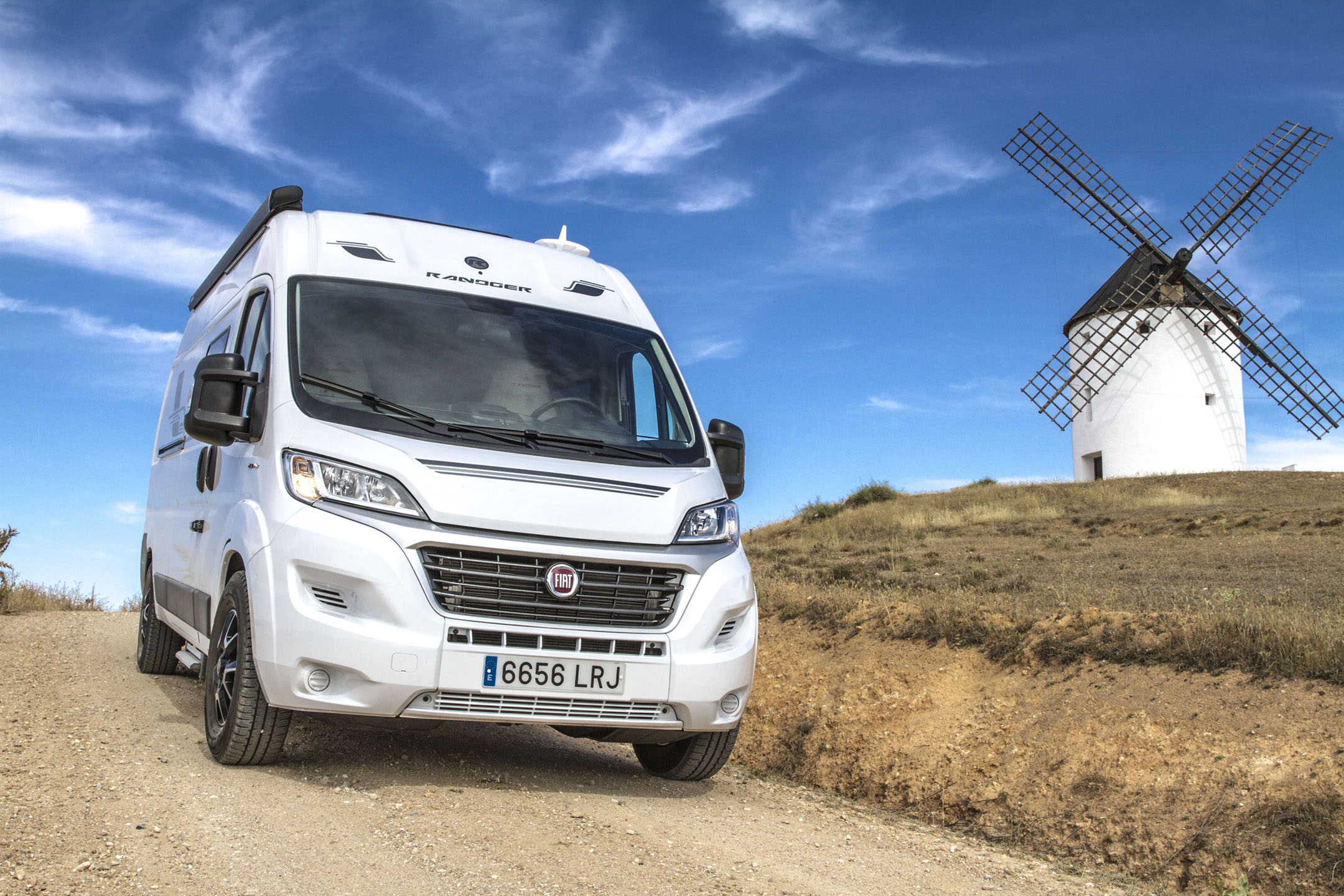

A camper route through the lonely, very quiet but always interesting towns of La Mancha keeps us always surprises. The villages that we offer you below can be a way to exploit our desire to travel by motorhome, Without going too far from home, spending too much gasoline and at the same time getting to know nearby places but still unknown to the skin of a bull.
Tembleque boasts of being the typical Toledo town. Quiet and sometimes twisty streets, and a lonely rural charm very typical of this region. Its porticoed town hall square from the seventeenth century is an attractive place, although in summer you may want to look for plenty in the surrounding streets, with whitewashed walls, small very secluded balconies and cobbled streets. The Baroque Palace of the Towers is another interesting place, as is the hermitage of Veracruz.

But the best are the mills, located on a hill at the exit of the town. They are replicas of the originals from the 16th century, but they convey the same effect. The road is not paved, but the road is easy for any vehicle.
Tembleque leaves us several places to "lodge" our vehicle comfortably and safely, always taking into account the limitations proposed by the legislation. In any case, very close, on the road to the cemetery of the town of Mora, we have a free motorhome area where you can change the gray and black waters of the camper.

Vineyards, olive trees and fields of cereal mark the work of the field throughout the year. Each town seems have your preferences. A little more than 40 kilometers, half an hour on the CM-410, we arrive at Quintanar de la Orden, another picturesque town in Toledo with emblazoned houses, several churches and a bullring from the 19th century that demonstrates the importance of the festival in many Spanish towns. The 16th-century church has two very beautiful atriums and a square defensive-looking tower.
The kitchen Manchega is based on hunting, with delicious pickled partridges and varied shepherd's stews, in addition to the classic manchego gazpacho and migas. If we like good tablecloths, we can go to the Granero restaurant, a famous family business in the town, although we have several options to choose from if we prefer tapas.
If we want to park better, yes, we must resort to El Toboso, very close to Quintanar, where there is a free parking lot that gives us some shade and a good deal.
Campo de Criptana, with its famous mills, is an obligatory stop on this La Mancha route. Located in Ciudad Real, this town inspired Cervantes to create those giants against which the beloved Don Quixote faced. In addition, the town provides a complete popular neighborhood, the Albaicín, with colored facades and Arab airs, as well as twisty streets and a good series of hermitages and religious buildings. But beware, the museum of Sara Montiel, born in Campo de Criptana, adds an additional touch of cultural interest.
In addition to the ten long mills, the cave house of the shepherdess Marcela is another interesting place. A house excavated in the rock that preserves the various original rooms, although it is not the only house excavated in rock that remains in Campo de Criptana. If it's time to eat and we bet big, Las Musas is an excellent option for typical local food: porridge, migas, gazpachos, partridges, all of them simple dishes but excellently prepared.
The Campo de Criptana motorhome area, with water drainage, showers and other services, is paid but it can serve as a center of operations during this stage of our trip. It is on Calle Colón 85 in the same town.
Again on the CM-420 and barely eight kilometers, in ten minutes we are in another very interesting location. Alcázar de San Juan offers us a beautiful square, that of Santa María, with a statue of homage to Cervantes, and a walled fortress that has witnessed all the historical dimes and diretes of the town. Not even the Roman sites are lacking, nor, of course, a classy church like that of Santa María la Mayor. The Municipal Museum of Alcázar delves into that archaeological legacy that dates back to prehistory, not only to the Romans, while the Hidalgo museum does the same in Cervantes' work.

Alcázar de San Juan has a free area for our vehicle, with the possibility of cleaning the gray and black waters as well as making the purchase and passing our pet. It is located on PJ Morotones 113 street. Nearby is the paid one, with 11 excellent places, the same services and many more, in addition to the possibility of serving as an access point to hiking and mountain biking routes, as well as being close to the area. bathroom. It is on Tomelloso street.
The time has come to face the end of the route. First on the CM-42 and then on the 420 we arrive at Puerto Lapice, a town in Ciudad Real that offers new and wonderful stages with mills cut out against the light. Again, it seems necessary to start the visit by the Plaza Mayor, mentioned several times in Don Quixote, and from there we can take a small great walk to the mills. Along the way, churches such as Nuestra Señora del Buen Consejo will enliven us on the way, making us even more aware that we are facing a full-fledged La Mancha people.
We can be calm in Puerto Lapice, a town where there is no lack of preparation for the camper world. The Calatrava street area has all imaginable services, in addition to serving as an access point to motorcycle, bike or hiking routes. Very close by, on the Madrid Andalucía highway (km 132) we find another one also very prepared to recover, refresh ourselves and renew the waters of the vehicle. Both are paid.








The specialty of Comercial Caravaning is the close relationship with our clients. You can come check it out at Comercial Caravaning in Alcorcón, very close to Madrid, Móstoles, Leganés... Very close to TI (experts in caravans, motorhomes and campers in the south of Madrid).


Contacto por WhatsApp